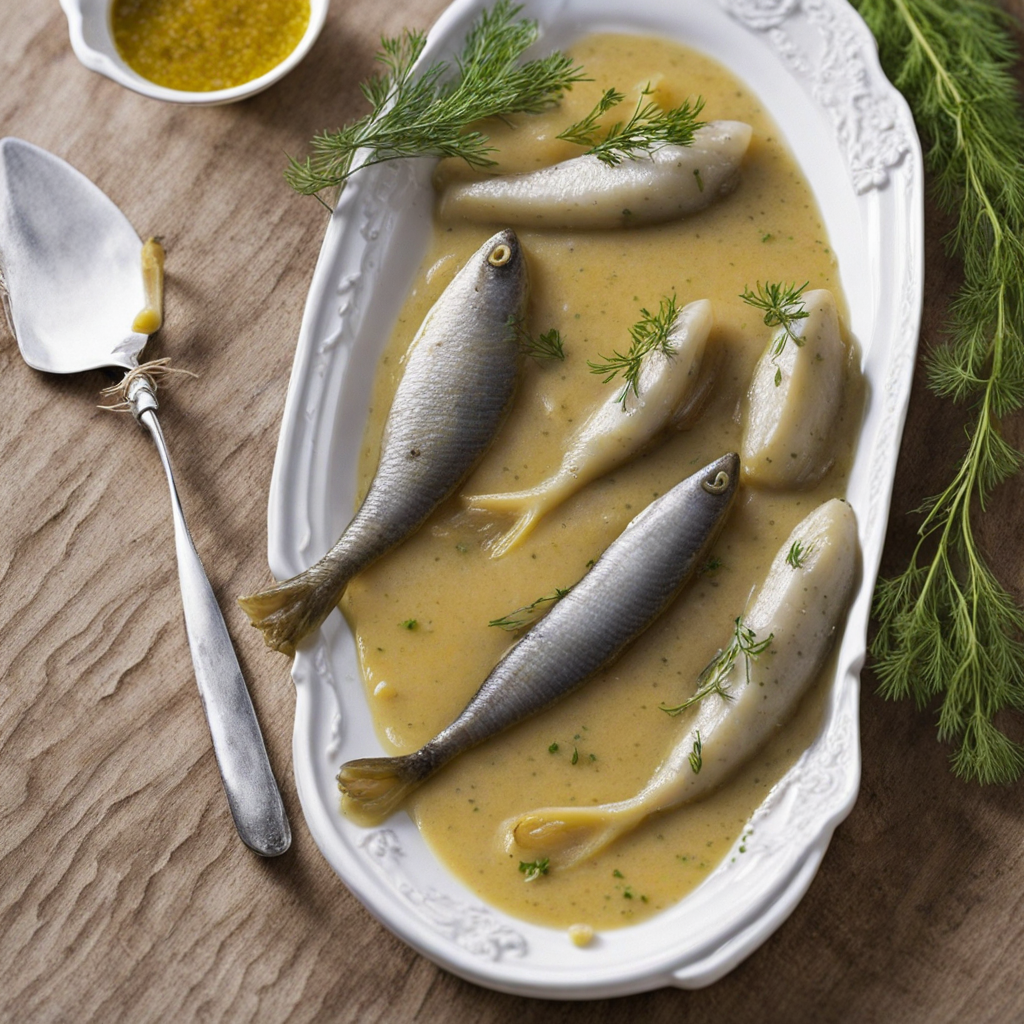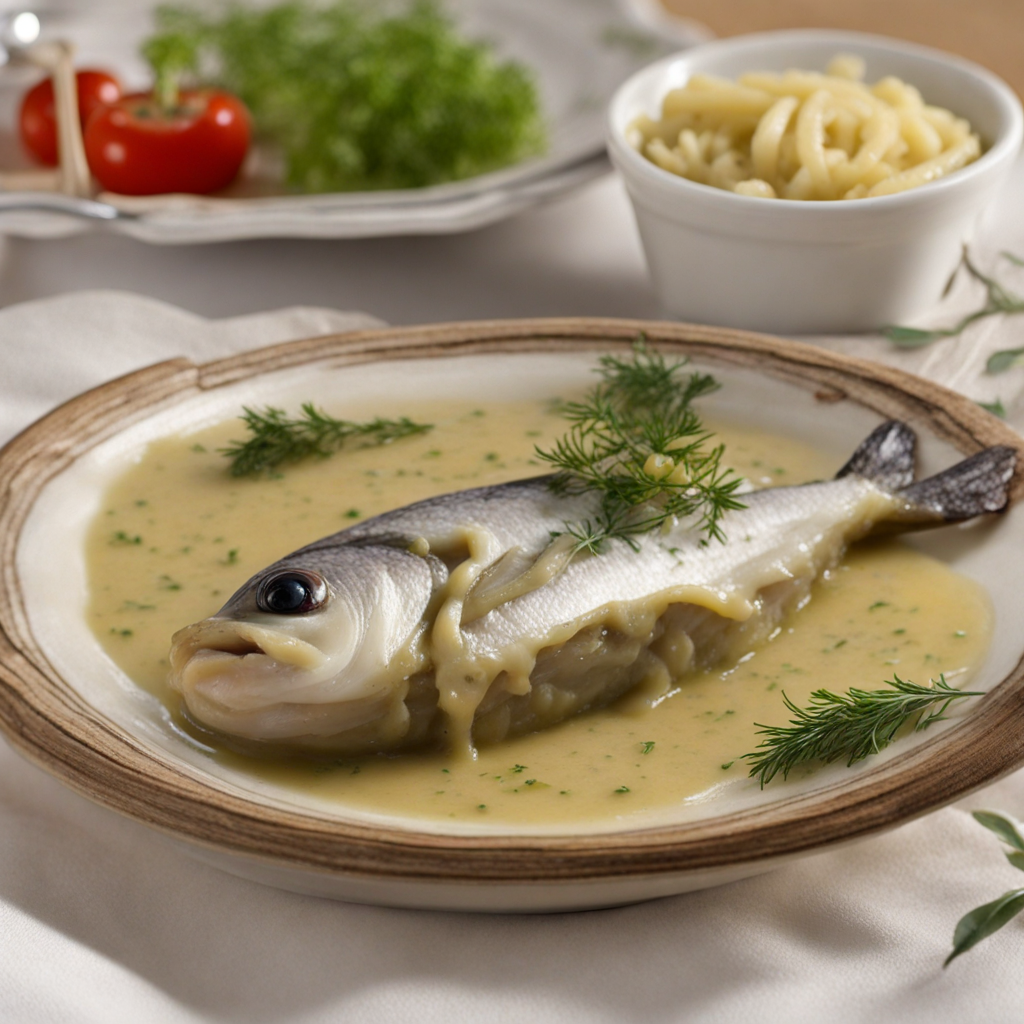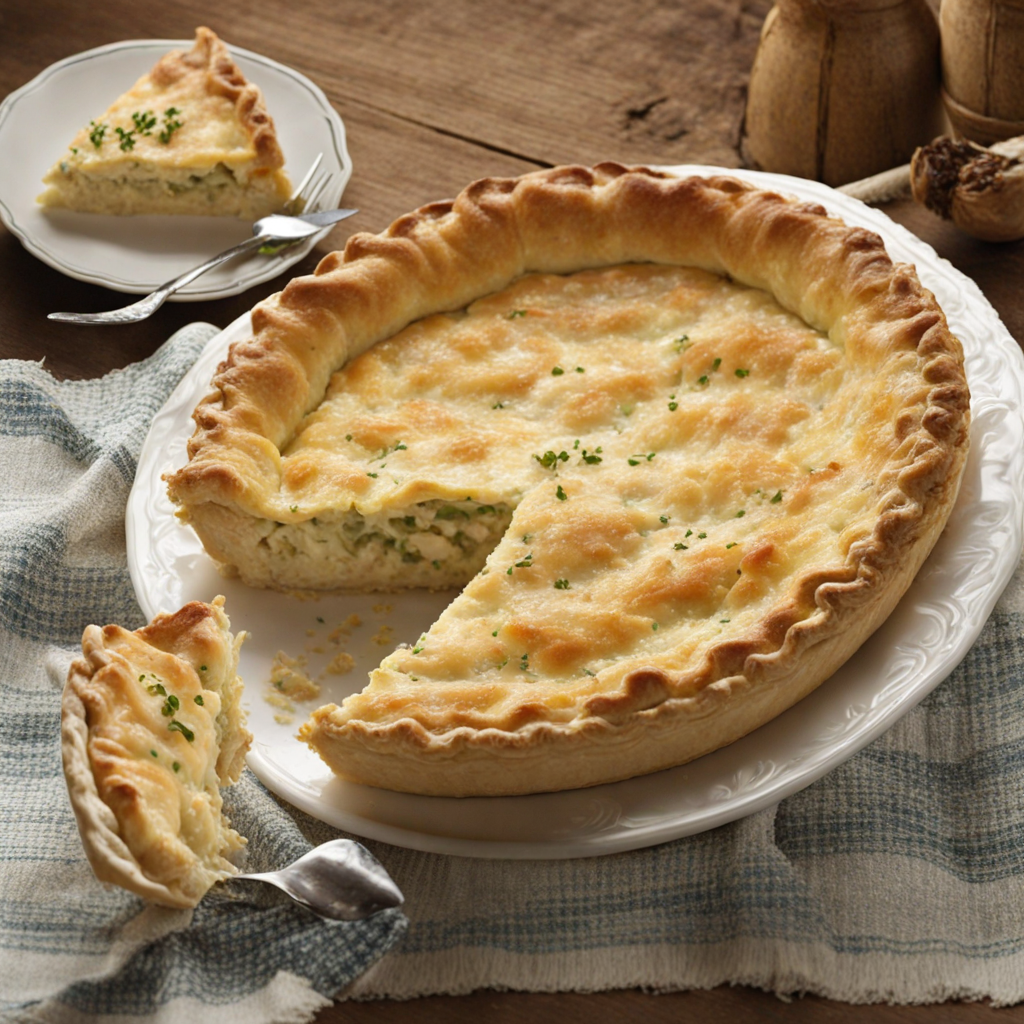Swedish Mustard Herring
Swedish Mustard Herring, or 'Senapssill' as it is known in Sweden, is a delightful part of the country's culinary heritage, showcasing the perfect balance of sweet, tangy, and savory flavors. The dish features herring fillets marinated in a rich mustard sauce, which typically combines yellow mustard, sugar, vinegar, and a hint of spices. This unique combination not only preserves the herring but also infuses it with a vibrant taste that tantalizes the palate. The herring itself is firm yet tender, providing a satisfying texture that complements the bold mustard sauce. As you take your first bite, the initial burst of sweetness from the sugar melds seamlessly with the sharpness of the mustard, creating a harmonious flavor profile that is both refreshing and invigorating. The pickled herring has a slightly briny essence, which enhances the overall taste experience. Traditionally served as part of a smorgasbord or during festive occasions like Midsummer or Christmas, Swedish Mustard Herring is often accompanied by boiled potatoes, crispbread, and a dollop of sour cream, making it a delightful addition to any meal. The vibrant yellow hue of the mustard sauce, combined with the glistening silvery fillets, makes for an appealing presentation on the table. Each morsel is a celebration of Sweden's rich fishing heritage and culinary creativity. Whether you're a seasoned lover of seafood or a curious foodie looking to explore new flavors, Swedish Mustard Herring offers an unforgettable taste adventure that captures the essence of Swedish cuisine.
How It Became This Dish
Senapssill: A Taste of Swedish Tradition and Heritage In the realm of Swedish cuisine, few dishes hold as much cultural significance and historical depth as senapssill, or mustard herring. This traditional dish, consisting of pickled herring marinated in a mustard sauce, embodies the essence of Swedish culinary practices and reflects the country’s rich maritime heritage. To appreciate senapssill fully, one must delve into its origins, its evolution over time, and its place in Swedish culture today. Origins: Herring and Preservation The story of senapssill begins with herring, a fish that has been a staple in the Nordic diet for centuries. The importance of herring cannot be overstated; it was a primary source of protein for coastal communities long before refrigeration and modern preservation techniques were developed. The Baltic Sea, with its abundant fish stocks, provided a plentiful supply, and the herring fishery became a cornerstone of local economies. As early as the Middle Ages, preserving fish through salting and pickling emerged as an essential practice. This not only extended the shelf life of fish but also made it possible to store food for long winters. Pickled herring became a popular dish, and various regional variations began to emerge throughout Scandinavia. The Emergence of Mustard Sauce Senapssill, as we know it today, likely took shape in the 19th century, a time when mustard was gaining prominence in European cuisine. Originally brought to Sweden by French chefs, mustard became increasingly popular, and its incorporation into various dishes reflected a growing trend of flavor complexity. The combination of pickled herring with a tangy mustard sauce was a natural evolution, as the sharpness of mustard complemented the salty, rich flavor of herring. The mustard sauce itself can vary in preparation, with different regions offering their own takes. Typically, it consists of a blend of mustard (often a mix of both sweet and Dijon varieties), sugar, vinegar, and spices, creating a balance of sweetness and tang that enhances the herring’s natural taste. This marriage of flavors not only highlights the fish's quality but also reflects Sweden's inclination toward balancing flavors in their cuisine. Cultural Significance Senapssill is more than just a dish; it is a symbol of Swedish culinary tradition and identity. In Sweden, herring is celebrated during major holidays and gatherings, especially during Midsummer, Christmas (Julbord), and Easter (Påsk). These celebrations often feature an array of pickled herring varieties, with senapssill being one of the most beloved. The tradition of serving herring during these festive occasions stems from historical practices. For centuries, the Swedish people relied on herring as a vital food resource. The act of feasting on herring during holidays not only reflects gratitude for the bounty of the sea but also serves to connect individuals with their heritage and community. In addition to its festive role, senapssill has inspired a variety of culinary innovations. Modern interpretations often see chefs experimenting with different flavors and ingredients, such as adding herbs, spices, or even fruits to the mustard sauce. This creativity allows senapssill to remain relevant in contemporary Swedish cuisine while maintaining its traditional roots. Development Over Time As Sweden modernized throughout the 20th century, so too did the preparation and presentation of senapssill. The industrialization of food production and the advent of supermarkets made ingredients more accessible, leading to greater experimentation in the home kitchen. Pre-packaged versions of senapssill became available, allowing those who may not have the time or skill to prepare the dish from scratch to enjoy its flavors. Despite this shift towards convenience, many Swedes still cherish the homemade version of senapssill, often passed down through generations. Family recipes are common, with each household adding its unique touch to the dish. The communal aspect of preparing senapssill—often involving family gatherings to pickle the herring together—remains an essential part of the experience. In recent years, the rise of the farm-to-table movement and a renewed interest in traditional foods has sparked a revival of artisanal food production in Sweden. Many chefs and home cooks are returning to traditional methods of preserving herring, emphasizing quality ingredients and sustainable practices. This shift not only honors the history of senapssill but also aligns with contemporary values regarding food sourcing and environmental stewardship. Senapssill Today Today, senapssill enjoys widespread popularity in Sweden, appearing in restaurants, at family tables, and during special occasions. Its distinct flavor profile and cultural significance make it a beloved dish among both locals and visitors. In restaurants, senapssill is often served as part of a smorgasbord, allowing diners to experience the full range of Swedish flavors. Moreover, its place in Swedish culture has been reinforced by social media, where food bloggers and influencers showcase their unique takes on this classic dish. This digital engagement has helped to introduce senapssill to a broader audience, inspiring others to explore and experiment with traditional recipes. Conclusion Senapssill is a dish that tells the story of Sweden—its history, culture, and culinary evolution. From its origins in the fishing villages of the Baltic Sea to its place on contemporary tables, senapssill encapsulates the resilience and creativity of Swedish cuisine. As it continues to adapt and thrive amidst changing culinary landscapes, one thing remains clear: senapssill is not just food; it is a celebration of Swedish identity, heritage, and community. Whether enjoyed during festive occasions or as a simple weeknight meal, senapssill is a timeless reminder of Sweden's deep-seated relationship with the sea and its culinary traditions.
You may like
Discover local flavors from Sweden







